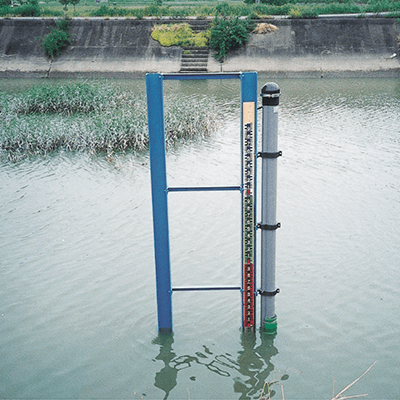What Is a Float Type Level Gauge?

A float type level gauge is an instrument that uses a float to measure the level of a liquid. It is typically used to monitor the level of water in a tank or container of liquid.
Float type level gauges operate on a simple mechanism and are relatively easy to handle. Since they indicate the liquid level according to the position of a floating object in the liquid, they are easy to operate and maintain. They are also highly reliable and can be expected to operate stably over a long period.
Because of its simple mechanical structure, the risk of failure or malfunction is low. However, dirt on the float or moving parts can impede movement and prevent accurate measurement.
Uses for Float Type Level Gauges
Float type level gauges are used in a variety of industries and fields. A typical application of float type level gauges is to control the liquid level in tanks and vessels that contain liquids. They are used in tanks for petroleum and other liquids to help control and monitor the maintenance of proper fluid levels.
Float type level gauges are especially useful for hazardous fuels such as petroleum, as they do not use electricity and can be used in explosion-proof areas. For liquids such as chemicals, these devices are also useful for liquid level control.
Many chemicals are highly corrosive to metals, making it difficult to use electrode level meters. Float type level gauges can be applied to a wide variety of liquids because the float can be made of resin.
However, the disadvantage is that it is difficult to apply to liquids with high viscosity because the float does not move. In addition, the float sinks in liquids with light specific gravity, so modifications are required according to the application.
Principle of Float Type Level Gauges
A float type level gauge consists of a float, a guide tube, and a suspension cord. It often has electrical contacts and can transmit a contact output. The float is a floating object, floating in the liquid and moving up and down in response to changes in liquid level. Floats are cylindrical or spherical and are often made of lightweight materials such as plastic.
An air chamber or adjustable weight may be installed at the top of the float to adjust buoyancy. The suspension cord is the component that lifts and holds the float. Guide tubes protect the float and limit its vertical movement. Usually, the float can move smoothly on a vertically installed guide tube.
If the product has electrical contacts, there is a structure that controls the switch on or off according to the position of the float. There are products that have a reed switch inside the float and products in which the switch is activated by changes in the weight of the float.
Float Type Level Gauge Types
There are several types of float type level gauges:
1. Take-up Type
This is a float type level gauge in which the float moves up and down by means of a take-up mechanism. Generally, the take-up mechanism is installed outside of the tank, and the float is attached to the take-up mechanism’s suspension cord. The float moves up and down in response to changes in the liquid level, and the take-up string is wound up to measure changes in the liquid level.
An indicator is often located on the outside of the tank, making it easy to read the liquid level. The spring balance type is used when accurate measurement is required, and the counterweight type is used when simpler measurement is sufficient.
2. Arm Float Type
This is a float type level gauge that measures the water level by means of an arm or lever to which a float is horizontally attached. As the float moves up and down in response to changes in the liquid level, the arm or lever rotates to indicate the liquid level by means of an interlocked pointer or scale. It can be mounted outside or inside a tank or container.
3. Ball Float Type
This is a float type level gauge in which a spherical float floats in accordance with the liquid level and measures the liquid level. The float has a cavity inside and moves up and down by buoyancy. The float rises when the liquid level rises and sinks when the liquid level falls. The indicator and contacts attached to the float change in conjunction with the movement of the float, allowing the liquid level to be read and the contacts to be output.
Many ball float type products also have a contact output. The contacts on ball float type level gauges generally switch when the liquid level reaches a specific range. This allows changes in liquid level to be detected and trigger the necessary action. This contact output is typically used to trigger an alarm or to control water supply and drainage.